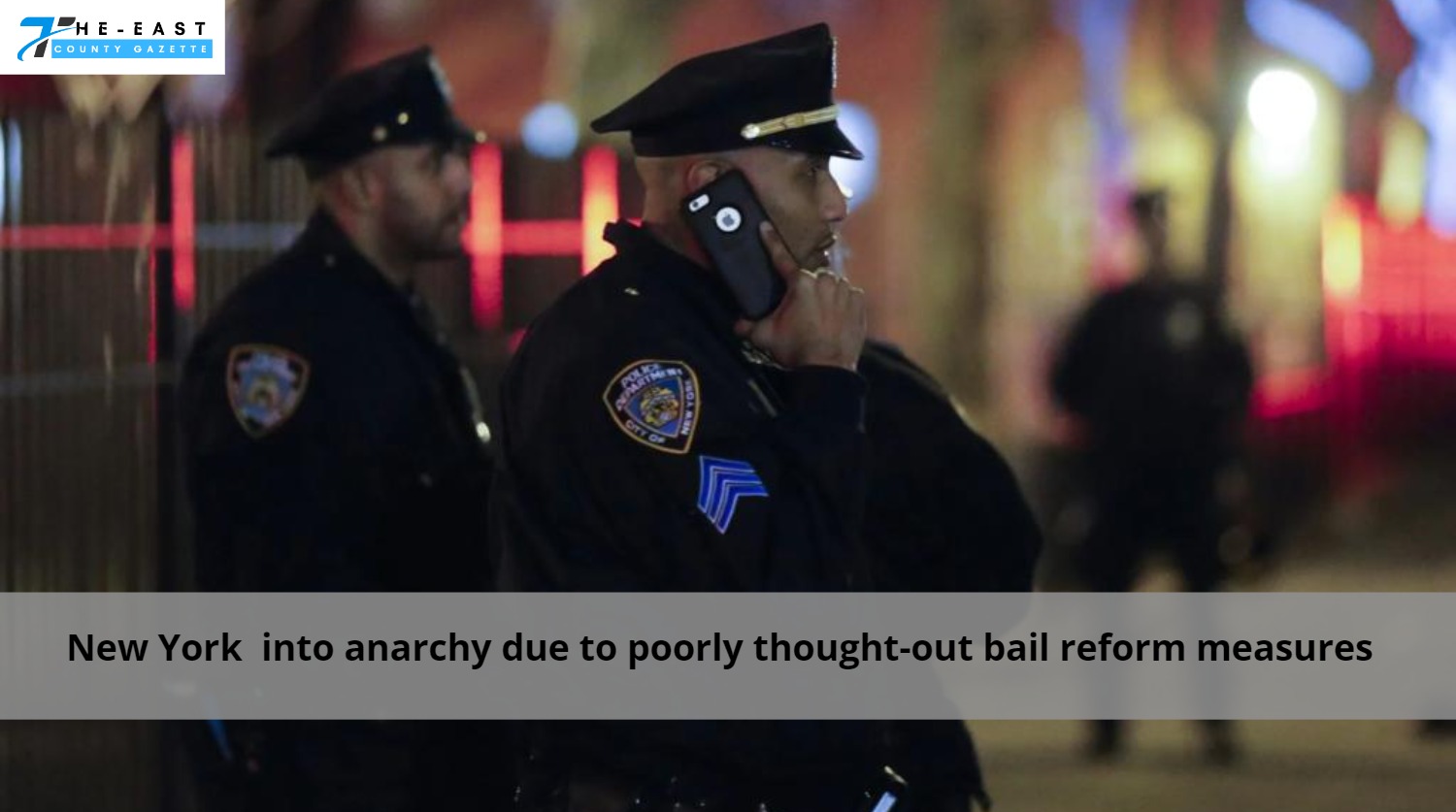I resigned from my position as administrative judge of the Queens Supreme Court Criminal Term last August.
This was a tough call because I enjoyed my work and was scheduled to stay in my position until the end of 2024.
However, New York City officials who lack the guts to confront misinformed supporters are undermining public safety.
I knew that if I stayed on the bench, I would never be able to publicly address the urgent issues plaguing our criminal justice system, such as the need for bail reform, so I made the difficult decision to step down.

As a result, I’ve entered the forthcoming Democratic primary for District Attorney of Queens. The top brass at NYPD is suitable to be critical of the no-bail policies.
New York, however, has many larger problems than merely its bail system to address.
After serving as both a judge and the NYPD’s first deputy police commissioner, I can attest to the necessity of cooperation across the many branches of the criminal justice system in maintaining public safety.
Laws that were poorly conceived
After then-governor Andrew Cuomo signed the poorly thought-out criminal justice package in 2019, our system was thrown into chaos, and a politically motivated crime wave was unleashed.
The reform package had good intentions (such as decreasing the number of people held in jail before their trials), but its implementation was doomed from the start.
Judges, prosecutors, and law enforcement personnel were rarely contacted, while the defense bar and political advocates were.
Every day, people have to deal with the fallout of this strategy. Our streets and subways became far more dangerous once we stopped enforcing our standards of quality of life.
Repeat offenders are frequently detained and released from jail. Nearly 30% more index crimes have been reported citywide, with some patrol boroughs seeing increases of over 44%.
Consistent, unprovoked assaults on our city’s public transportation system prove that police presence alone is inadequate. In principle, all of this was designed to help shut down Rikers.
Nonetheless, this strategy failed. The City Council’s decision to enact the law was predicated on an extremely low estimate of the average daily population—roughly 3,300 people.

Not based on any actual data but rather a budgeted estimate. There is no indication that the current population of roughly 6,000 will decrease soon.
Even if all of the proposed community jails in the surrounding area become operational tomorrow, Rikers would still be needed to house over half of the incarcerated population.
Furthermore, the 2019 reform package does not include language allowing courts to take into account an individual’s potential “dangerousness” while determining bail determinations.
In addition, the nature of the crime, the defendant’s criminal record, and the possibility of the offender returning to court cannot be taken into account by the judge.
As a judge, I oversaw several troubling cases, some of which were so murky that the district prosecutors, judges, and defense attorneys all had differing interpretations of the law regarding the applicability of bail.
It will take a long time, if ever, for this uncertainty to be resolved under the current statutory system. Such cases have led to a general public mistrust in the judicial system’s ability to ensure their safety.
After serving as a supervisory judge in Bronx Criminal Court and an administrative judge in Queens Supreme Court Criminal Term, I can confidently say there is no valid justification for this issue to persist inside the criminal justice system.
Despite the law’s phrasing, it is clear that the legislature intends for judges to take dangerousness into account.
Of the types of crimes that qualify as bail eligible, the vast majority are ones that would raise safety concerns, such as homicide and rape. This shady interpretation of the law is to blame for the muddle.
To resolve this issue, state lawmakers should follow the lead of the other 49 states and the federal courts by adopting a dangerousness criterion for bail.
There is a similar lack of clarity surrounding the topic of discovery because of the significant difficulties brought on by the city’s recently enacted regulations.
It’s not uncommon for DAs, courts, and defense lawyers to disagree on which records must be turned over.
Queens, where I was born and raised, has been a hotspot for the haphazard and disorganized rollout of discovery reform.
Rather than making the system simpler, the random sharing of thousands of documents by prosecutors just serves to exacerbate the problem.

Extreme difficulties
Our criminal justice system is in dire straits due to numerous factors, including the dismantling of quality-of-life enforcement, the Rikers Island fiasco, the erosion of judicial discretion, and the lack of structure in our discovery procedures.
A team I worked on in the mid-1990s, led by Police Commissioner Bill Bratton, set a new standard for public safety in our city, which has since been held up as an example to other cities around the country.
We are prepared to take back our city. For starters, our district attorneys need the guts to take charge of public safety and collaborate with the NYPD to restore equitable and efficient quality-of-life enforcement in the subways.
To fix the problems caused by her predecessor, Governor Hochul must ask the legislature to summon a special session to protect the independence of the judiciary, punish lawbreakers, and increase public safety.
In the end, if the criminal justice system doesn’t advocate for public safety, then who will?

